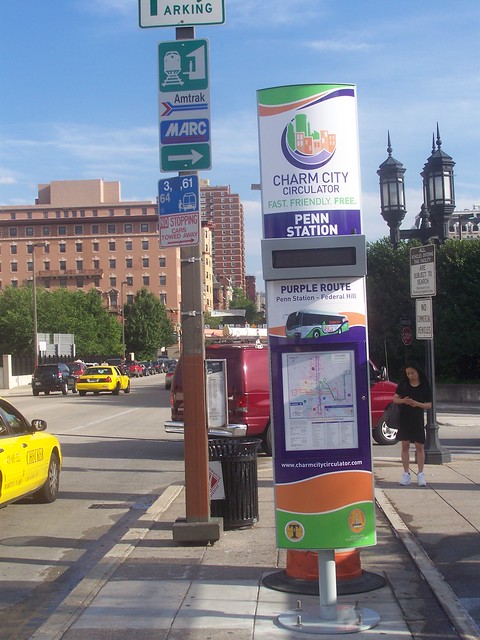Frameworks for high frequency surface transit
I was quoted in this piece, ``Green Machine: The Charm City Circulator is more than a cool free bus--it's part of a hopefully sustainable relationship`` in the Baltimore City Paper about the Charm City Circulator. The main thrust of the piece is that Veolia Transportation is taking an ever bigger piece of the transportation pie in Baltimore City as they also own Yellow Cab as well as manage and operate the Circulator for Baltimore City. Plus a different division does water treatment. And another part operates the bus service for Johns Hopkins University.
I was hoping the article was going to be a cover story, because it would have been able to cover much more. (I talked with the journalist for over an hour.) A big part of the conversation was how to provide high frequency transit service in the core of the center city, how to reposition the value and perception of transit, not to mention various issues about privatization and how this may well impact the power of transit unions. (In Baltimore the MTA service, comparable to WMATA, is represented by the Amalgamated Transit Union, while the Circulator is not. It`s the same in DC, WMATA workers are represented by unions, while the Circulator bus service, run by a division of the Downtown BID through a contract with DC Government, is not.)
My quote, in this paragraph:
If that works, it could spark a change in the way Baltimore views public transit. "The Circulator does something that the MTA doesn't do," says Richard Layman, a blogger (urbanplacesandspaces.blogspot.com) who has worked as an urban planning contractor for Baltimore County. "It's helping to reframe how people think of transit. The prevalent belief is that only poor people ride trains. This is beginning to reposition transit."
needs to be clarified:
This is a fragment of the broader point I was making, it`s not just that the Circulator is free or that it isn`t MTA (which can help set new service metrics for and expectations for transit service in the region, not just for MTA in general, but for the workers and for the Union specifically in how it conceptualizes its role as a representative of workers who in turn need to help satisfy the needs of customers), it`s that by overlaying a framework for high frequency transit service within the core of Baltimore City (intra-city transit), through the Circulator, the opportunity to reframe the value, efficiency, and effectiveness of transit is offerred.


Labels: transit, transportation planning



0 Comments:
Post a Comment
<< Home